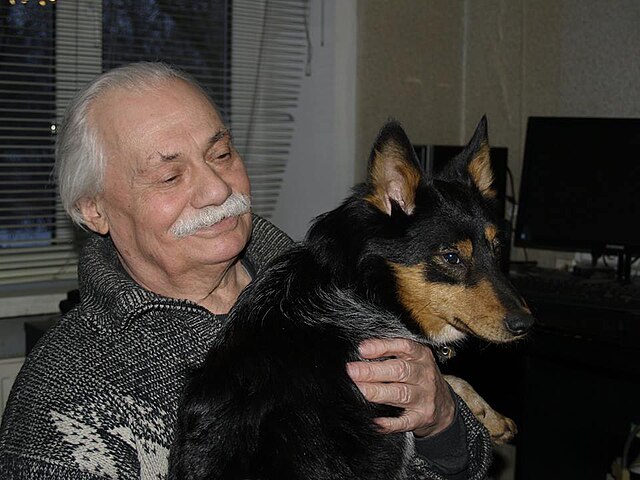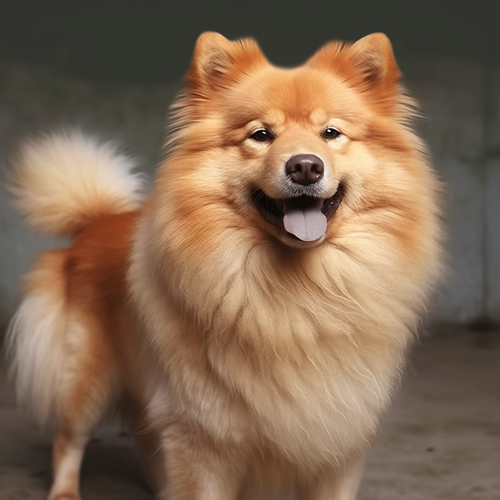The East Siberian Laika is the largest of the laika breeds. Used primarily for hunting, this Russian spitz breed was also utilized as a sled dog, draft dog (pulling carts or other heavy objects), and even as a drover. As such they are considered a multi-purpose breed with a specialization in hunting large and small game. They were bred to withstand the often-harsh climates and terrain of Siberia, so they are a hardy breed. Friendly and even-tempered in nature, they can make good companions in the right home as well. They will form very strong bonds with their owners and are naturally protective to those whom they consider “part of their pack”.
East Siberian Laikas can make excellent watchdogs and some can even function as guard dogs. These that do often take this role very seriously. It is vital that an East Siberian is socialized extensively while young so that he can distinguish between friend and foe, and won’t become a liability. For a dog that usually lives about 13-15 years, it can save a lot of future stress to make sure the first 6 months (minimum) of the dog’s life is filled with many socializing opportunities!
The East Siberian is a medium to large dog (normally 40-50 pounds) with a square outline. The coat is fairly short but thick and protective, and comes in a number of colors including pepper/salt, gray, red, white, black and brown. These colors can be solid or combined with eachother into any pattern. Like most spitz breeds, the tail is curled up and over the back, and the ears are pricked. There is some variation of ear size, tail carriage and other traits in the breed due to the fact that early breeders utilized a variety of different types early on, but for the most part East Siberians can be differentiated from other similar breeds. Keep in mind that he does shed quite profusely and will need to be brushed regularly! 
East Siberian Laikas are territorial and not apt to get along with strange dogs that wander onto their property. Many also have problems with other dogs (especially of the same sex), whether or not on their turf. Because of a high prey drive, they also don’t do well in homes with cats or small pocket pets that are often let out of the cage. With children, many can co-exist peacefully although may not tolerate rude behavior from very young kids. As such they shouldn’t live in homes with toddler-age children. In general, this breed is normally recommended only for experienced dog owners.
When it comes to training, the East Siberian is very independent and may take a little longer to respond. He can also be somewhat stubborn and “intelligent in his own way”. This said, obedience is important and should be started young, particularly because the breed can have some dominance tendencies. Also consider training him in other dog sports to exercise his mind and body – agility or carting are two examples of sports which he is naturally suited to. Giving him a job to do in the form of training will lessen the chances of him developing behavior problems based on boredom.
East Siberians are considered a high energy breed and do need a lot of regular exercise. Because of their low sociability towards strange dogs, a dog park is not recommended for exercise. Instead, take them out regularly for jogs or long hikes on the trail! While the backyard can be a nice place for them to run around every day, the majority of dogs don’t exercise themselves enough in a yard alone. One additional note about a yard – make sure the backyard is fully fenced so this hunting breed won’t use the neighborhood as his hunting ground! When given enough physical and mental exercise, East Siberians are calm and collected in the home.



